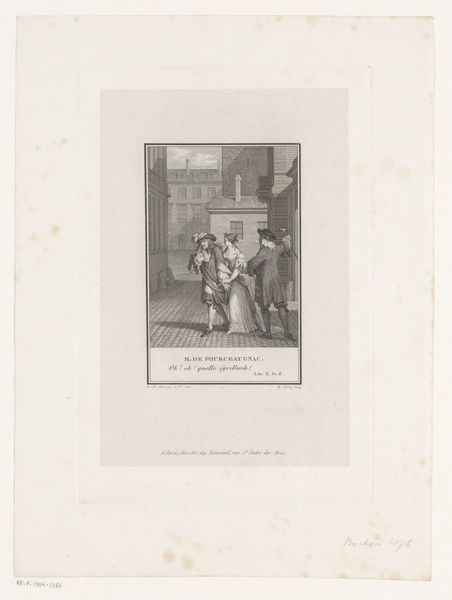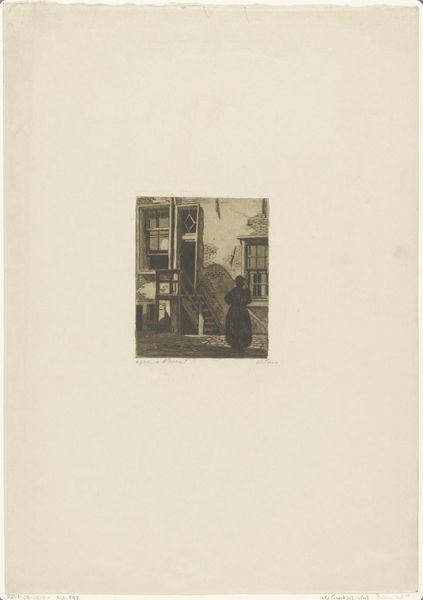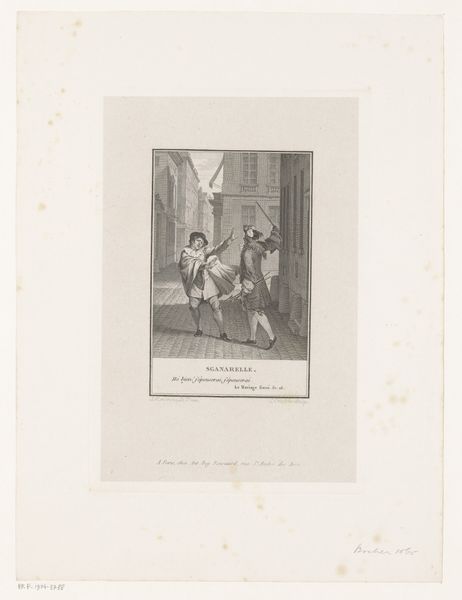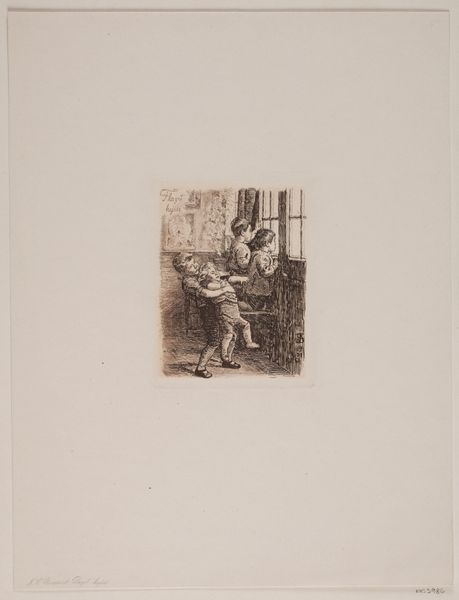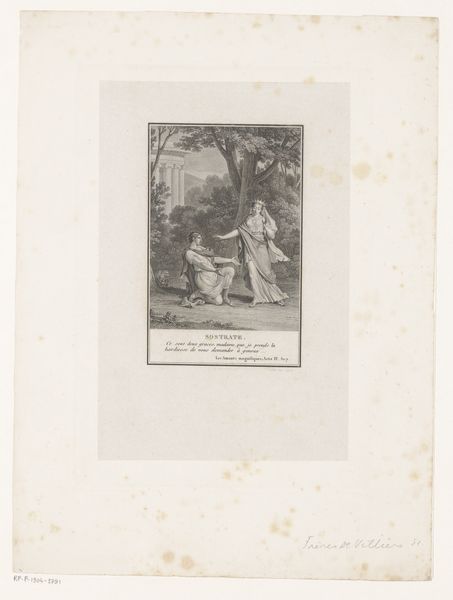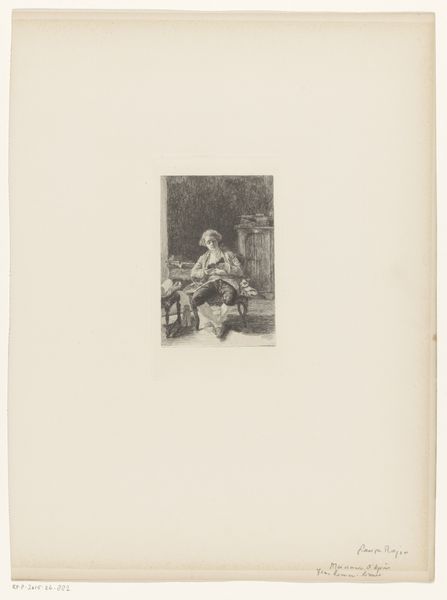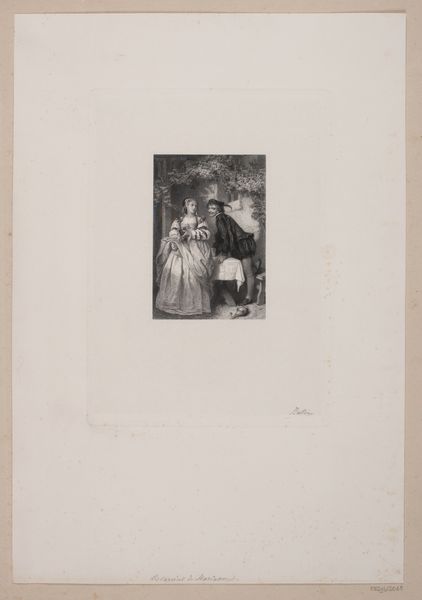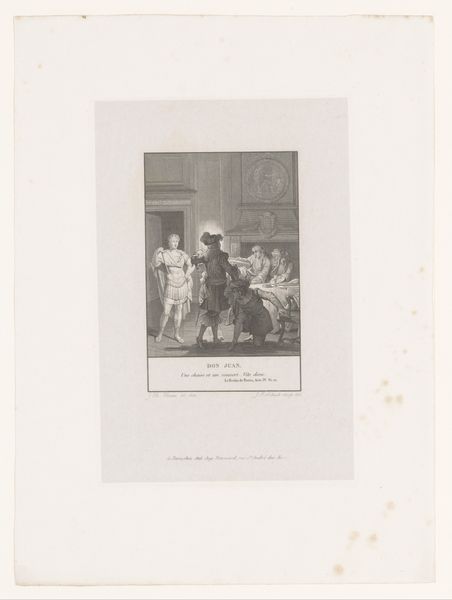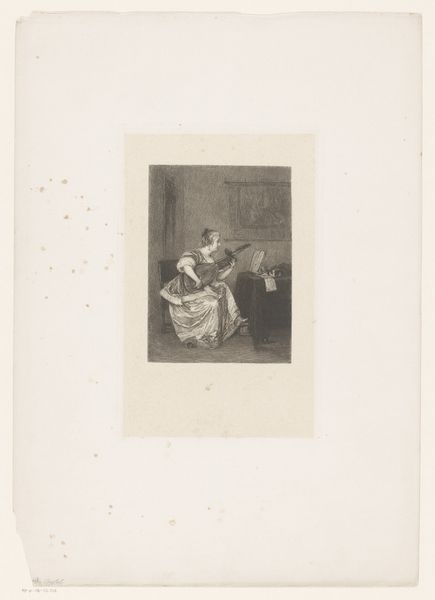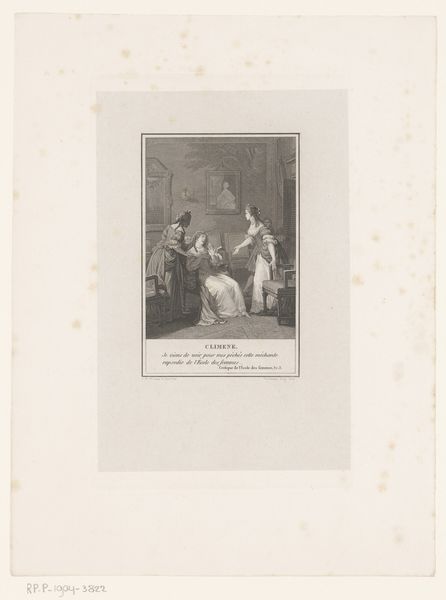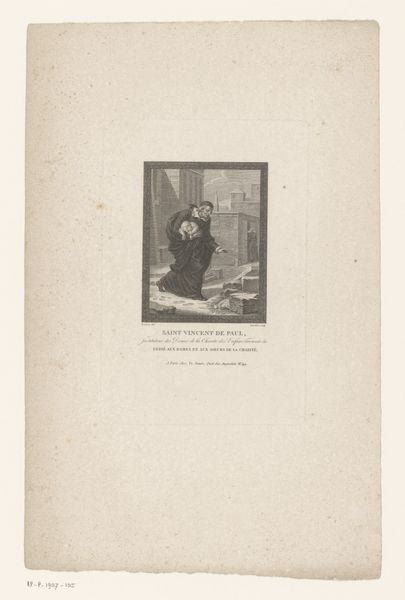
drawing, print, paper, engraving
#
drawing
#
narrative-art
# print
#
figuration
#
paper
#
romanticism
#
history-painting
#
engraving
Dimensions: height 218 mm, width 154 mm
Copyright: Rijks Museum: Open Domain
Curator: This print from 1813 by Jean Bosq is entitled “Sganarelle houdt de flauwgevallen Célie in zijn armen," or in English "Sganarelle holds the fainted Célie in his arms.” It is a black and white engraving on paper. Editor: The romantic drama of it all hits you immediately, doesn’t it? Her limp body, his urgent grasp… It makes me think of tragic opera. Curator: Indeed! There's a theatricality to the whole scene, wouldn’t you say? Consider how Bosq stages the figures. He emphasizes their plight against the architectural severity of the city. The engraving itself is meticulous; the lines are very fine, allowing for detailed textures. Editor: That cityscape in the background is fascinating – this could almost be an updated version of Romeo carrying Juliet. Though the precision is impressive, I can't help but feel it lacks some raw emotion. It feels… staged, even beyond the inherently staged nature of theatre itself. Curator: Well, look at the formal constraints imposed by the medium. An engraving requires a very calculated approach, and perhaps that contributes to what you're describing. But observe how Bosq uses light and shadow—especially on Sganarelle's figure. Doesn’t the contrast heighten the tension and drama? Editor: To a degree, yes, but it doesn't fully bridge the gap. I can analyze the lighting, the composition… and the linear perspective creating depth. Still, the essence of emotional chaos— that is somewhat missing. Although that doesn't mean it's not appealing. What sort of source would an artist in the 19th century pull on when representing Romantic subjects like this one? Curator: Surely the visual arts drew significantly on contemporary theatre—specifically on stagecraft conventions. A contemporary audience would have understood the heightened gestures. Perhaps they saw Sganarelle's care towards Célie more visibly here than in other renditions? Editor: An interesting perspective! And for today’s listener, thinking about that link might help unlock a new way of seeing this relatively obscure print. Curator: Absolutely. These nuances embedded in historical visual culture can provide unique encounters with an artwork like this.
Comments
No comments
Be the first to comment and join the conversation on the ultimate creative platform.
